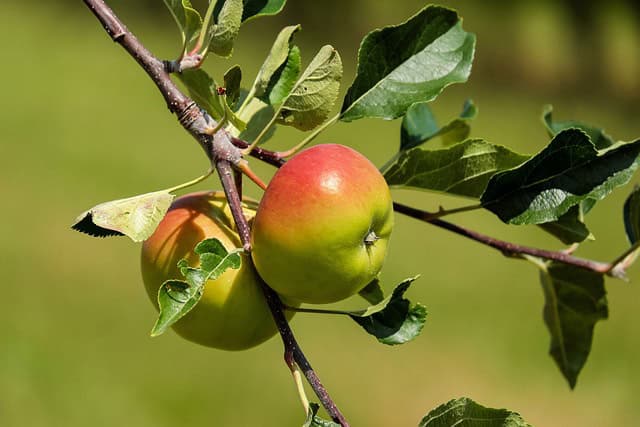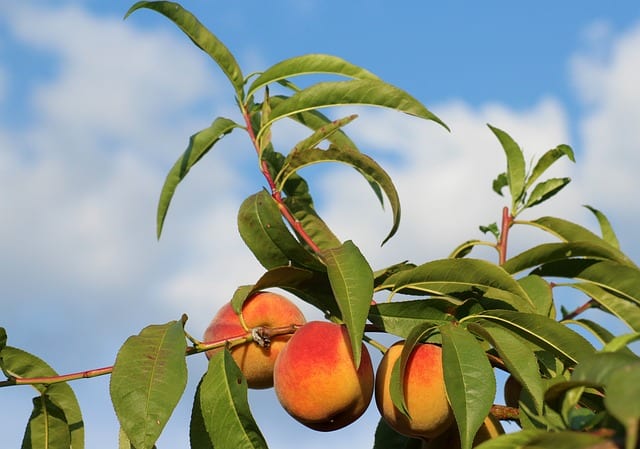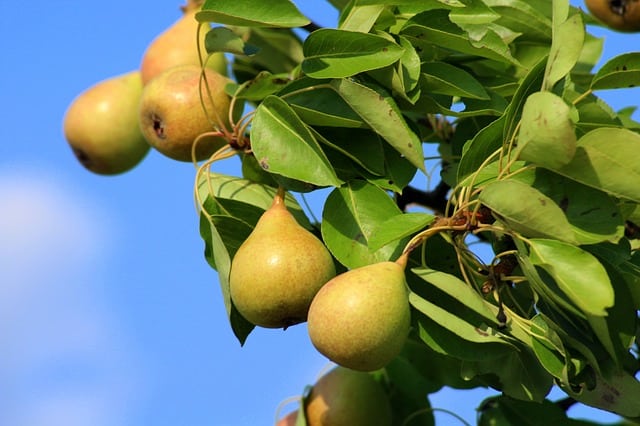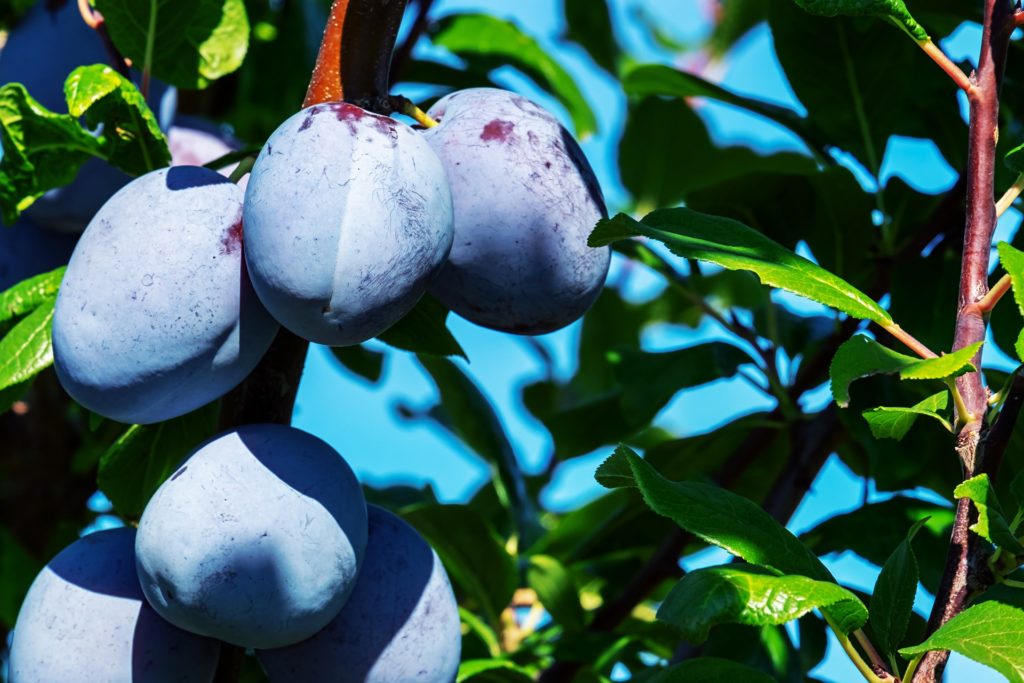Colorado’s diverse climate and varying altitudes make it both a challenging and rewarding place for fruit tree cultivation. From the high plains to the mountains, gardeners must select fruit trees that not only suit their local conditions but also produce delicious, healthy fruit.
This guide will introduce you to some of the best fruit trees suitable for Colorado’s climate, offering insights into their growing requirements, regional suitability, and tips for successful cultivation.
Apple (Malus domestica)

Apples are one of the most popular fruit trees in Colorado, thriving across a range of elevations and conditions. The tree is known for its stunning spring blossoms, which are followed by a bounty of delicious, crisp fruit in the fall.
When selecting apple varieties, consider your local climate. Honeycrisp, Fuji, and Gala are particularly well-suited to Colorado’s cooler temperatures and can handle the fluctuations in season. Apple trees typically require full sun and well-drained soil, making sites with good sunlight exposure ideal for growth.
One potential hurdle in Colorado is the late frosts that can occur in the spring. To mitigate this risk, early-blooming varieties should be avoided, and protective measures like frost cloths may be employed during unpredictable weather. Regular pruning is essential to encourage fruit production and maintain tree health. Overall, the adaptability and impressive array of flavors make apples a standout choice for Colorado gardeners.
Peach (Prunus persica)

The sweet, juicy peaches that thrive in Colorado are a gardener’s dream. While peaches are traditionally a southern fruit, specific varieties have adapted remarkably well to Colorado’s climate. The Prunus persica variety is particularly notable for its ability to withstand the state’s temperature fluctuations.
When growing peaches, it’s crucial to choose low-chill varieties suited to Colorado’s varying temperatures. For instance, Reliance and Elberta peaches are favored for their resilience and sweet fruit. These trees prefer full sun and well-draining, sandy loam soil for optimal growth.
Colorado’s dry climate can be beneficial for peach trees; however, they do require consistent watering, especially during the fruiting period. Mulching around the base helps retain moisture while preventing weeds. Additionally, peach trees are susceptible to diseases such as peach leaf curl, so regular inspections and preventative treatments are encouraged. With the right care, peaches can produce bountiful harvests each year, providing a taste of summer all season long.
Pear (Pyrus communis)

Pear trees are another excellent addition to Colorado’s fruit tree repertoire, offering a range of delicious varieties that thrive in the state’s unique climate. Bartlett and Anjou pears are the most popular choices, known for their sweet flesh and elegant, bell-shaped structure.
Pears generally prefer well-drained soil and should be planted in a location that receives full sun. These trees can handle a range of soil types, though they excel in sandy loam. Their resistance to common pests and diseases makes them appealing for gardeners looking for a lower-maintenance fruit tree.
One of the challenges pear trees face in Colorado is the potential for fire blight, a bacterial disease that can affect flowering trees. To minimize this risk, it is advisable to prune in late winter when the trees are dormant. That said, when well cared for, pear trees can thrive, bear significant fruit, and attract local wildlife, offering a beautiful and productive addition to gardens or orchards.
Plum (Prunus domestica)

Plum trees, particularly the European varieties like Stanley and Damson, thrive in Colorado’s climate and produce sweet, juicy fruit. These trees are valued for their versatility and can be used in fresh eating, canning, and baking.
Plum trees require a sunny location with good air circulation, which helps reduce the risk of diseases such as brown rot. They prefer slightly acidic to neutral well-drained soils, often flourishing in Colorado’s sandy soils. One important aspect is pollination; many plum trees are self-pollinating, but planting a second tree can significantly enhance fruit yield.
Fruits typically ripen in late summer, and the sight of a tree laden with plums is a beautiful reward for any gardener. Regular pruning is essential to maintain tree health and fruit production, allowing sunlight to penetrate the canopy. With proper care, plum trees can provide not just fruit but also stunning spring blossoms and fall foliage.
Apricot (Prunus armeniaca)

For those looking to add a touch of sweetness to their garden, apricot trees are a fantastic choice. Varieties like Moongold and Tilton are adapable to Colorado’s climate and produce small, sweet fruits that are perfect for fresh eating or preserving.
Apricots prefer full sun and benefit from light, well-drained soils. They can be a bit sensitive to late frosts, as their blooms tend to emerge early in the spring. To combat this, it’s crucial to plant apricot trees in areas where they can receive heat from the sun, especially during cooler nights.
Regular watering is important, ensuring that the trees have sufficient moisture, particularly in the first few years after planting. Like other stone fruits, apricots require routine pruning to maintain shape and health, encouraging a good yield of fruit. Not only do apricot trees produce delicious fruit, but they also boast beautiful flowers in spring, enhancing the beauty of any garden.
Cherry Trees

Cherry trees are another fabulous option for Colorado fruit growers, bringing a burst of color and delicious fruit. Two main types of cherry trees thrive in Colorado: sweet cherries, like Bing and Rainier, and sour cherries, such as Montmorency.
Sweet cherries tend to require a bit more care and specific pollination conditions, usually yielding the sweetest, largest fruit. While sour cherries are easier to grow—often requiring only one tree for pollination—they offer their own unique tart flavors, ideal for baking and preserving.
Cherry trees require full sun and well-drained soil to flourish. They are generally drought-tolerant once established, but consistent watering during dry spells is ideal for promoting fruit set. Due to their susceptibility to pests like aphids and birds, using netting may be necessary during the fruiting season.
With their striking spring blossoms and the allure of cherry pie or fresh cherries in the summer, cherry trees are a delightful addition to Colorado landscapes. They not only produce delicious fruit but also serve as a picturesque element in any yard or orchard.
Growing Fruit Trees at High Altitude
Growing fruit trees at high altitude can be a rewarding endeavor, allowing gardeners to enjoy fresh, homegrown produce despite the unique challenges posed by elevation. The crisp, clean air, abundant sunlight, and stunning mountain views can create a perfect backdrop for a fruitful garden. However, high-altitude gardening comes with its own set of considerations that every aspiring fruit tree grower must understand. In this post, we’ll explore the challenges and strategies for successfully growing fruit trees at high altitudes, ensuring you can cultivate your own delightful orchard.
Understanding High-Altitude Conditions
High-altitude gardening typically refers to areas above 5,000 feet, where climate conditions can vary dramatically from lower elevations. Here are some key factors to consider:
Shorter Growing Seasons: The growing season at high altitudes can be significantly shorter, often lasting only 90 to 120 days. This means that gardeners must be strategic about which varieties to choose, focusing on those that mature quickly.
Temperature Fluctuations: High-altitude areas can experience rapid temperature changes, with cool nights even during the summer. These fluctuations can affect fruit set and overall tree health. It’s common for trees to be subject to late frosts in the spring and early frosts in the fall, which can harm blossoms and developing fruit.
Soil Composition: Soils at higher elevations can be rocky, poor in nutrients, and well-draining. Understanding local soil composition and improving it where necessary is crucial for successful fruit tree cultivation.
Sunlight Exposure: The increased UV radiation at higher altitudes can benefit plant growth but can also lead to sunburned leaves and fruit. Providing some afternoon shade can help protect sensitive trees.
Choosing the Right Fruit Trees
When selecting fruit trees for high-altitude gardening, it’s essential to choose varieties known for their hardiness and adaptability. Here are some of the best options for high elevations:
Apple Trees: Varieties such as Honeycrisp, Granny Smith, and Fuji are popular for high-altitude areas due to their tolerance for colder temperatures and adaptability to varying conditions.
Cherry Trees: Sour cherries (like Montmorency) tend to do better in high altitudes compared to sweet varieties. They are more resistant to late frosts and often bear fruit when conditions are still favorable.
Plum Trees: European plums, such as Stanley, can thrive at higher elevations. They tend to be more resilient against frost and have a shorter chill requirement.
Pear Trees: Look for hardy varieties like Bartlett and Kieffer, which are known for their ability to withstand less-than-ideal conditions.
Peach Trees: Although more challenging, some cold-hardy varieties such as Reliance can succeed in higher elevations, providing you ensure the right growing conditions and protection from frost.
Preparing Your Site
A successful high-altitude orchard starts with careful site preparation. Here are some steps to consider:
Soil Testing and Improvement: Conduct a soil test to understand nutrient levels and pH. Amendments such as compost, organic matter, or specific fertilizers can improve soil fertility and structure.
Sunlight: Choose a site that gets full sun for at least 6-8 hours a day. However, consider providing afternoon shade to prevent sunburn on young trees, particularly in exposed areas.
Wind Protection: High altitudes can produce strong winds that can damage trees. Planting windbreaks, like shrubs or taller trees, can protect young fruit trees from wind desiccation.
Water Management: High elevations often have fast-draining soils, so implement an efficient irrigation system. Consider drip irrigation to deliver consistent moisture, especially during the dry growing season.
Planting Your Trees
When planting fruit trees at high altitude, timing is crucial. Here are some tips to ensure success:
Timing Your Planting: The best time to plant fruit trees is in early spring, after the danger of frost has passed. Spring planting allows roots to establish before the heat of summer.
Planting Depth: Ensure that trees are planted at the right depth, with the graft union (where the variety is joined to the rootstock) sitting level with or slightly above the soil surface. This prevents disease and promotes healthy growth.
Spacing: Space trees appropriately to allow for air circulation, sunlight penetration, and root expansion. Recommended distances vary based on the type of fruit tree, but generally, dwarf varieties can be spaced 10-15 feet apart, while standard trees may require 20-25 feet.
Care and Maintenance
Once your trees are planted, ongoing care is essential for healthy growth and fruit production. Key maintenance practices include:
Pruning: Regular pruning helps shape trees, remove dead or diseased wood, and improve air circulation within the canopy. This practice is especially important for mitigating disease risks and improving light access for fruit.
Watering: Young trees require consistent watering during their first few years to establish roots. As trees mature, they may become more drought-tolerant, but it’s still crucial to monitor soil moisture, especially during dry spells.
Fertilization: Fertilize your trees in early spring with a balanced fertilizer designed for fruit trees to promote vigorous growth and fruiting. Follow up with additional applications during the growing season as needed based on soil tests.
Pest and Disease Management: High-altitude trees can still face pests and diseases, albeit potentially fewer than at lower elevations. Regularly inspect your trees and apply organic pesticides or fungicides as necessary, especially in the spring.
Protecting Trees from Frost
Since high-altitude regions are notorious for unpredictable frosts, taking measures to protect your trees is essential:
Frost Covers: Use frost cloths or blankets on particularly cold nights to protect blossoms and young fruit. It’s often helpful to have these on hand and be prepared to cover trees as the blooming season begins.
Mulching: Apply a layer of mulch around the base of trees to maintain soil temperature and moisture, which can help protect roots from temperature fluctuations.
Selecting Hardy Varieties: Choosing fruit trees that naturally bloom later or have adapted to the high-altitude climate can reduce the risk of frost damage.
Harvesting and Enjoying Your Fruit
After dedicating time and effort to planting and caring for your high-altitude fruit trees, the reward of harvesting your homegrown produce is incredibly rewarding. Here are some tips for harvesting:
Timing: Harvest fruits when they are ripe for the best flavor and quality. Many fruits change color or become softer when ready to pick.
Storage: Store harvested fruits properly to prolong their freshness. Many high-altitude fruits can be enjoyed fresh, canned, or made into jams and jellies.
Community Sharing: Consider sharing your harvest with friends and neighbors, participating in local farmers’ markets, or donating to local food banks. Engaging with the community can create connections and spread the joy of homegrown fruit!





